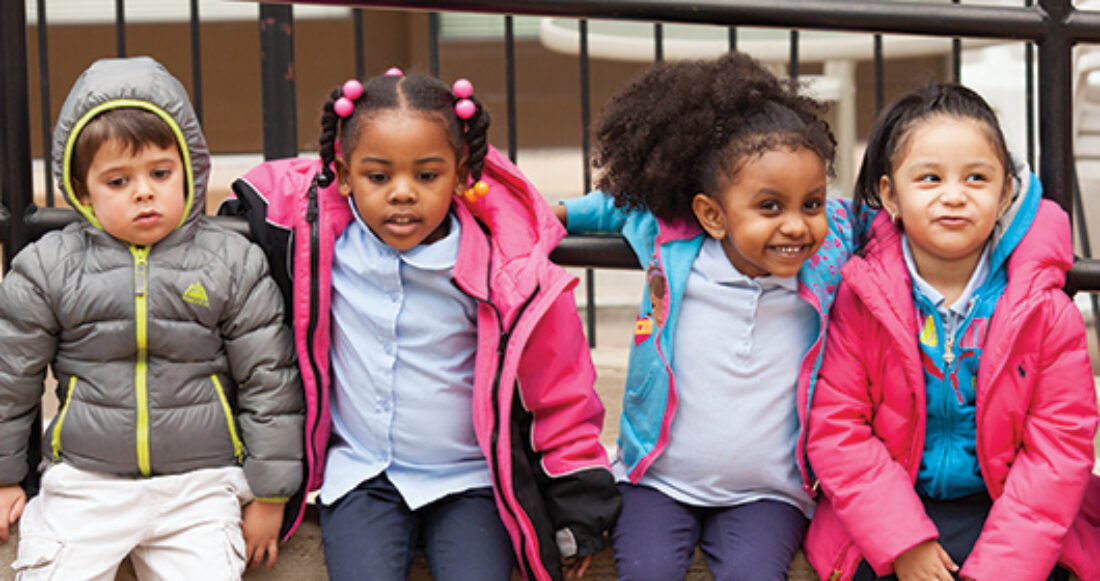National, State Scorecard on Children’s Progress Shows Persistent Obstacles to Reaching Milestones

America’s future prosperity depends on our ability to prepare all children to achieve their full potential in life. Amid rapid demographic changes, a new report from the Annie E. Casey Foundation shows we have much ground to cover to ensure that all kids – especially children of color – are positioned to thrive.
The KIDS COUNT® policy report, Race for Results: Building a Path to Opportunity for All Children, unveils the new Race for Results index, which compares how children are progressing on key milestones across racial and ethnic groups at the national and state level. The data can assist leaders who create policies and programs that benefit all children, and identify areas where targeted strategies and investments are needed.
By 2018, children of color will represent the majority of children in the United States. The report highlights serious concerns that African-American, Latino, Native American and some subgroups of Asian-American children face profound barriers to success – and calls for an urgent, multi-sector approach to develop solutions.
“This first-time index shows that many in our next generation, especially kids of color, are off track in many issue areas and in nearly every region of the country,” said Patrick McCarthy, president and CEO of the Casey Foundation. “Race for Results is a call to action that requires serious and sustained attention from the private, nonprofit, philanthropic and government sectors to create equitable opportunities for children of color, who will play an increasingly large role in our nation’s well-being and prosperity.”
The index is based on 12 indicators that measure a child’s success in each stage of life, from birth to adulthood. The indicators were chosen based on the goal that all children should grow up in economically successful families, live in supportive communities and meet developmental, health and educational milestones. To compare results across the areas in the index, the indicators are grouped into four areas: early childhood; education and early work; family supports; and neighborhood context.
Overall, the index shows that at the national level, no one racial group has all children meeting all milestones. Using a single composite score placed on a scale of one (lowest) to 1,000 (highest), Asian and Pacific Islander children have the highest index score at 776 followed by white children at 704. Scores for Latino (404), American-Indian (387) and African-American (345) children are distressingly lower, and this pattern holds true in nearly every state.
“Race for Results provides a high-level but nuanced look at children in each racial demographic and some of the conditions that explain their circumstances,” said Laura Speer, associate director of policy reform and advocacy at the Casey Foundation. “We see that where a child lives matters and that in nearly every state, African-American, American Indian and Latino children have some of the steepest obstacles to overcome. Our analysis also clearly demonstrates that growing up in an immigrant family can have a significant impact on access to opportunity.”
For African-American children, the situation is dire. In general, states in the Rust Belt and the Mississippi Delta are places where opportunity for black children is poorest. African-American kids face the greatest barriers to success in Michigan, Mississippi and Wisconsin.
The report finds there are clear differences in the extent to which barriers to success exist for different subgroups of Asian children and for Latinos. Although Asian-American children scored the highest on the well-being indicators, children of Southeast Asian descent (Burmese, Hmong, Laotian, Cambodian and Vietnamese) face barriers on the pathway to economic stability. For Latinos, kids from Mexico and Central America face the biggest barriers to success.
The report makes four policy recommendations to help ensure that all children and their families achieve their full potential:
- Gather and analyze racial and ethnic data to inform polices and decision making;
- Utilize data and impact assessment tools to target investments to yield the greatest impact for children of color;
- Develop and implement promising and proven programs and practices focused on improving outcomes for children and youth of color; and
- Integrate strategies that explicitly connect vulnerable groups to new jobs and opportunities in economic and workforce development.





